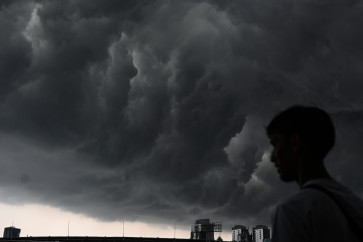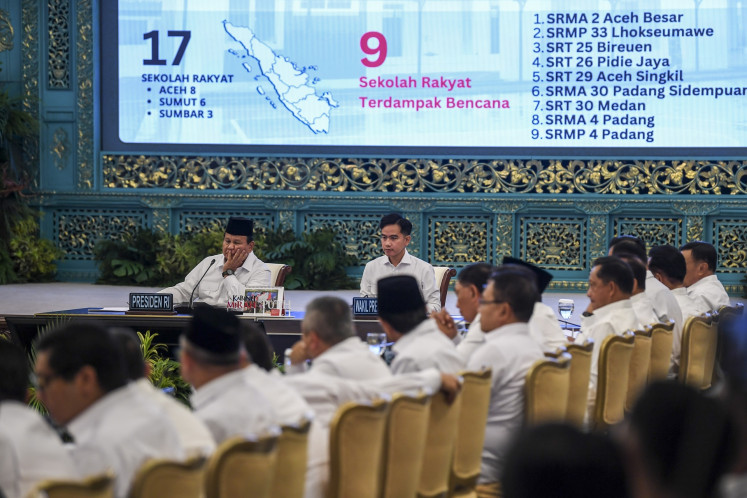Popular Reads
Top Results
Can't find what you're looking for?
View all search resultsPopular Reads
Top Results
Can't find what you're looking for?
View all search resultsRapid mine expansion in East Java may risk environment
Change text size
Gift Premium Articles
to Anyone
R
ampant mining in East Java has increased environmental risks in the region with companies being negligent about the operational standards they are supposed to follow when exploiting the area.
Mining areas have expanded sixfold from 86,904 hectares in 2012 to 551,649 ha last year as companies race to tap gold, iron and manganese deposits.
According to the Energy and Mineral Resources Ministry in 2012, gold deposits in East Java amounted to 2.8 million tons while manganese and mineral sands were 143.5 million tons and 735.6 million tons respectively.
In Trenggalek and Banyuwangi, the two regencies with the largest gold deposits, the expansion has been rapid. In Trenggalek, the local administration has issued exploitation permits for about 30,044 ha of land, or a quarter of the regency’s area.
The East Java office of the Indonesia Environment Forum (Walhi East Java) said loose oversight by local administrations has led to the massive expansion.
It recorded that there are at least 69 regulations that have allowed the expansion and posed threats to the environment. Thirty-five decrees were issued by the central government and three by the East Java provincial administration, while the remaining 31 were by regency and municipality administrations.
Walhi East Java director Rere Christanto said if the central government and local administrations don’t withdraw the problematic regulations, there may be increasing conflicts and environmental disasters in the future.
“Most of the mining areas are located along the southern coast of East Java. All is gone for mining activities,” he said.
(Read also: Indonesia's true cost of coal: Devastating environment)
Along with the rapid development in the country, there have been concerns about environmental hazards that are detrimental to citizens.
Rapid expansion of plantations through the burning of land and forests has resulted in an annual smoky haze that has made people in Sumatra and Kalimantan suffer respiratory problems and has disrupted daily activities.
Sand and rock mining that takes place on the shores of Palu and Donggala, Central Sulawesi, has also troubled local citizens.
The extensive rock and sand mining has taken its toll on the environment and the people in the area.
On the shores of Palu and Donggala, excavators and crushers were seen in full operation, smashing stones into gravel, sand and dust. Large trucks then took the small rocks to barges and tugboats for delivery to East Kalimantan.
The health center has recorded about 20 cases of people vomiting blood and hundreds of others affected by respiratory disease caused by the mining dust over the last few months.
In addition to health problems, 23 traffic accidents have taken place at mining locations. There has also been erosion and landslides, creating slippery roads within only a year.
Trenggalek Regent Emil Elestianto Dardak denounced the rapid mine expansion, but said that he could not do anything about it since the permits were issued before he took office last year.
“This is a big mistake. The permits were issued by the East Java administration and my predecessor. I, in fact, have initiated an open forum to know what people actually want,” said Emil.
He said he respected the mining that was already in progress, but he said that not all of the 30,044 ha should be allocated for exploitation.
Banyuwangi Environmental Agency head Husnul Chotimah dismissed concerns about the environmental risk of mining gold in the regency.
She said that as long as environmental standards are met, there should be no problems.
“I hold to the environmental impact analysis [Amdal]. If the miners have met all the necessary requirements, there won’t be significant risks,” she said.










